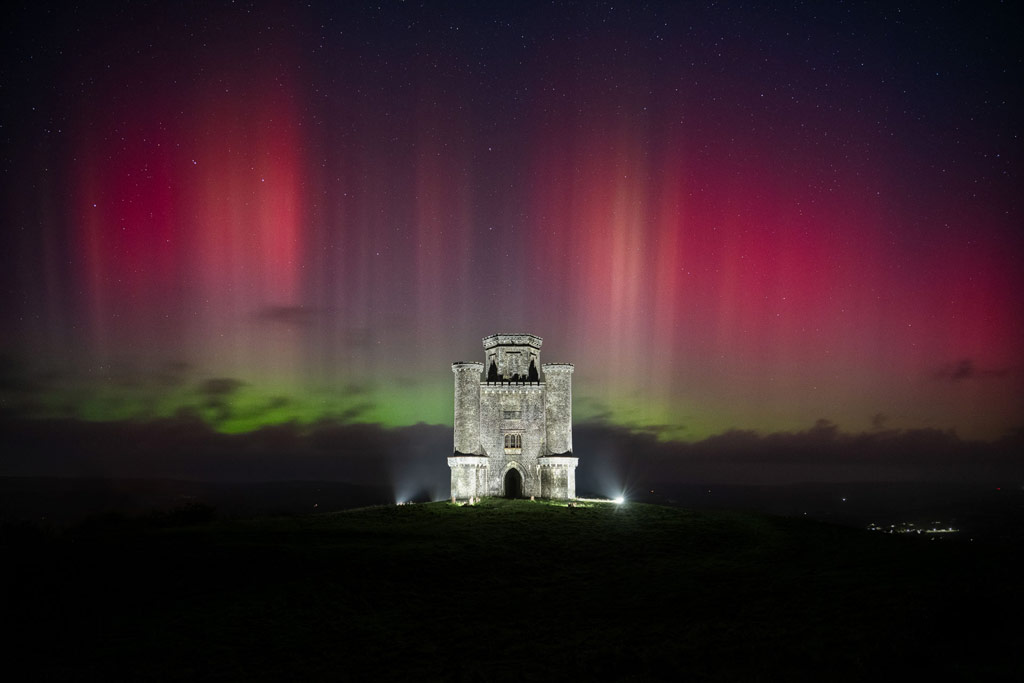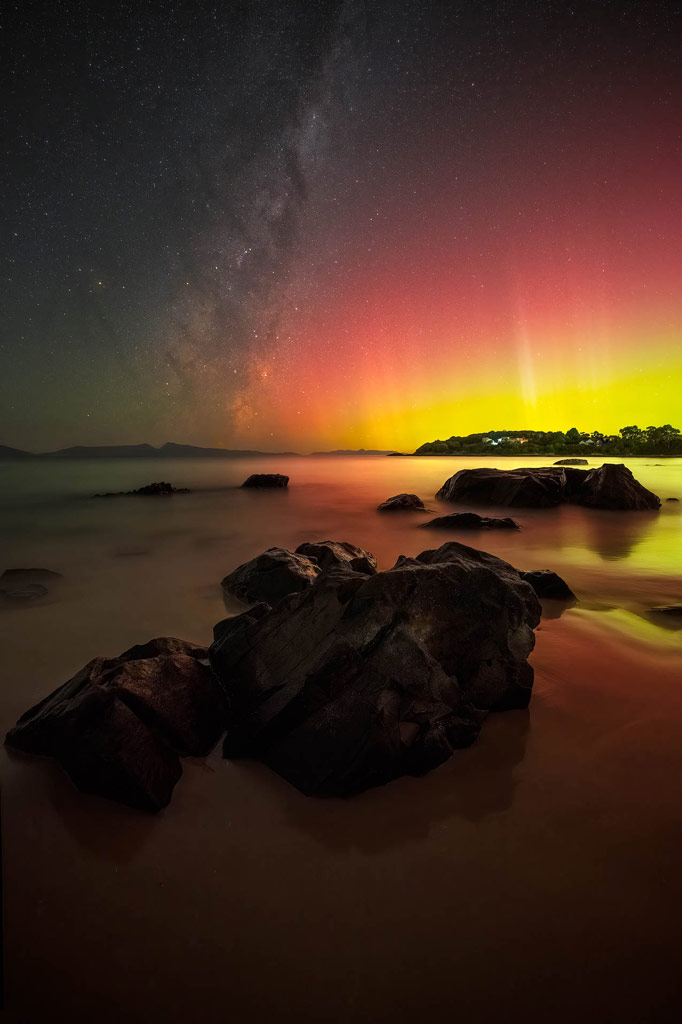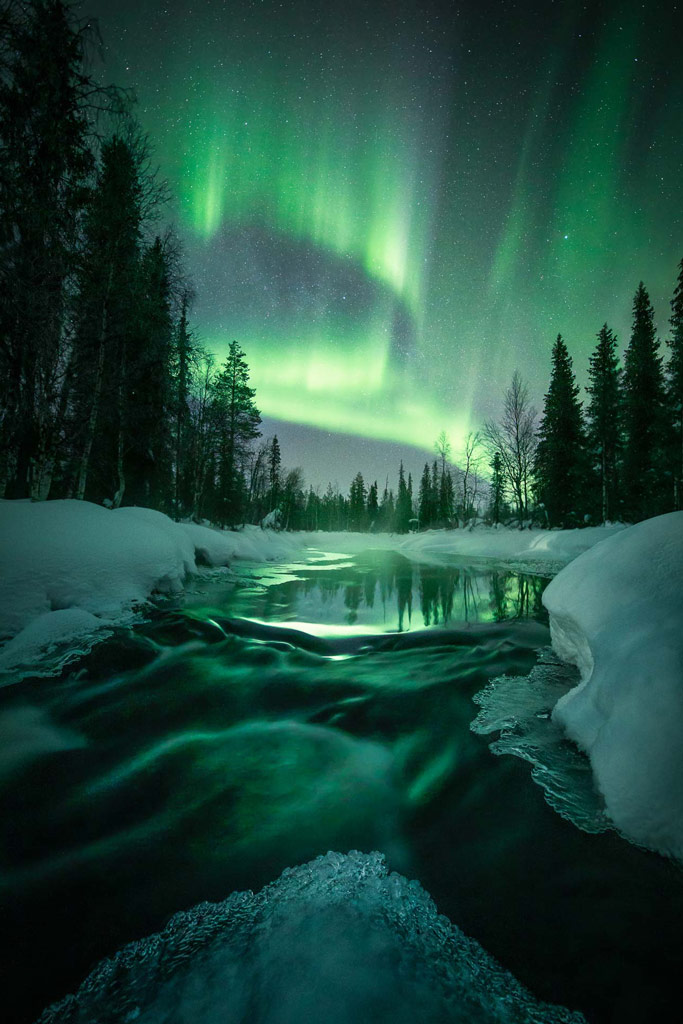Winners of the 6th edition Northern Lights Photographer of the Year awards have been announced. Among the 25 winners from all over the world, there are some incredible night photographs including from two British photographers, Matthew Browne with his rare capture of the northern lights seen at Paxton’s Tower in Wales and Kat Lawman‘s mesmerising photo of the Welsh seaside captured at Penmon Lighthouse, near Puffin Island.
If you are feeling inspired to have your take on photographing the northern lights read our guide on the best cameras for astrophotography and best lenses for astrophotography.

“Goleuadau’r Gogledd” by Matthew Browne, Winner of the Northern Lights Photographer of the Year 2023. Nikon Z7 II, Nikkor 28-75mm f/2.8 lens, 28mm, f2.8, ISO 1600 bracketed exposures at 1,4 and 8 seconds, at Penmon Lighthouse, Wales, United Kingdom, Image credit: Matthew Browne
You may think capturing the northern lights is only possible in countries like Norway or Sweden. Still, this year’s winner images include locations like Germany, Wales and even the Dolomites in Italy. This is possible thanks to the phenomena called the solar maximum (the period when the Sun is at its highest activity in its 11-year cycle), in this phase the Aurora Borealis commonly known as Northern Lights are visible at lower altitudes than usual. Visit the Capture the Atlas website for the full list of winning images.

“Aurora Explosion” by Jason Perry, Winner of the Northern Lights Photographer of the Year 2023, Tasmania, Australia, Stacked/blend, All shots were 13 seconds at f/2.8, ISO 5000. I stacked the foreground with 12 shots and used a single exposure for the sky so I wouldn’t lose detail in the aurora. Nikon Z7II, Nikkor Z 14-24mm f/2.8 S, Sirui tripod. Image credit: Jason Perry
From Capture the Atlas: Travel photography blog Capture the Atlas has published the 6th edition of their annual Northern Lights Photographer of the Year, a collection featuring the best 25 photos of the Northern Lights. This compilation is always published in December to coincide with the Northern Lights season and the end of the year, and it is aimed at inspiring and sharing the beauty of this natural phenomenon.
This year’s list includes images that were taken around the world, in countries like the UK, the United States, Canada, Germany, Italy, Finland, Norway, Iceland, Russia, Australia, and New Zealand, by 25 photographers of 13 different nationalities.
As we get closer to a solar maximum (the period of greatest solar activity during the Sun’s 11-year solar cycle), we are seeing Northern Lights displays at lower latitudes and Aurora images in unique places where they haven’t been photographed before. In this edition, we have examples like the Aurora images in Wales, Germany, Italy’s Dolomites, mainland Australia, and Death Valley National Park.
The quality of the image, the story behind the shot, and the overall inspiration that the photograph can provide are the main factors for selecting the images every year. The article not only helps other photographers who want to photograph the Northern Lights, but also brings this phenomena closer so everyone can learn and discover more about one of nature’s most spectacular light shows.

“Circle of Life” by Frøydis Dalheim, Winner of the Northern Lights Photographer of the Year 2023, Lappland, Finland, 14mm, ƒ/1.8, 10s, ISO 4000, Canon 5D Mark IV, Sigma 14mm f/1.8, Image credit: Frøydis Dalheim
The Northern Lights season ranges from September to April in the Northern Hemisphere and from March to September in the Southern Hemisphere. The best time to see and photograph the Lights is during the fall and spring equinoxes because of the orientation of Earth’s axis.
Dan Zafra, editor of Capture the Atlas, curates these photos throughout the year. He looks not only for images taken by some of the most renowned photographers, but also for new talents and for new locations where Aurora images are rare.
Capture the Atlas is a travel and photography blog that helps others plan their trips and improve their photography. Their main focus is landscape and astrophotography, and their articles include photography guides, tutorials, and inspiration.
Related content:
- Best photography competitions to enter in 2024
- Best photography events and festivals to visit around the world
- How to photograph the Northern Lights with Göran Strand
Follow AP on Facebook, Twitter, Instagram, YouTube and TikTok.








